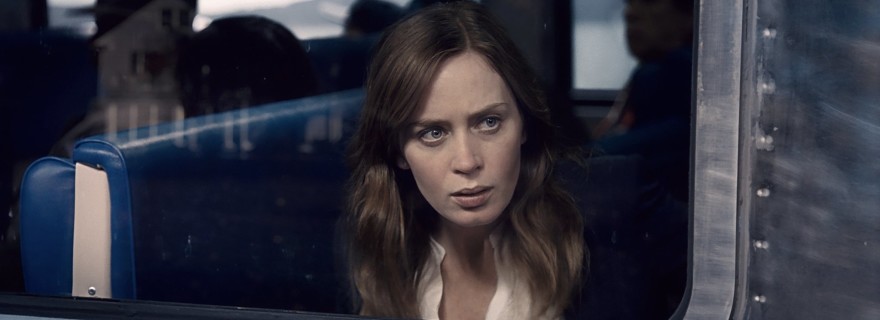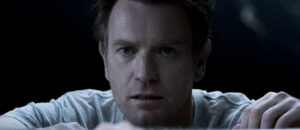'The Girl on the Train'
Movie Rating:
2
Some bad movies remind you how good another movie was. ‘The Girl on the Train’ is one of those. This marital murder melodrama based on a bestseller is remarkably reminiscent of ‘Gone Girl’ and likely only exists because of that movie’s success. Unfortunately, ‘The Girl on the Train’ lacks all the wit, morbid humor and self-conscious storytelling that made ‘Gone Girl’ more than its trashy origins.
This one is just trash, only presented so deathly seriously that it isn’t even trashy fun. With a sense of irony and a more playful filmmaker such as Paul Verhoeven or Brian De Palma in charge, this could have been a little lurid fun for the date night crowd. Instead, it’s a dull and predictable trip through the motions made by filmmakers who should know better.
This is a twisty-turny tale that’s difficult to sum up without spoilers since the narrative plays out so non-linearly. The gist is that Rachel (Emily Blunt) is a recently dumped alcoholic who rides the train into New York every day to stare at her old home and brood. Her ex-husband (Justin Theroux) is now happily remarried to another woman (Rebecca Ferguson) and finally has the baby that Rachel couldn’t provide. When Rachel isn’t starring at that happy home and despising what happened, she also gazes at her sexy former neighbors, Scott and Megan (Luke Evans and Haley Bennett), a pair of sexed-up newlyweds having lots of sexy sex. Megan is unhappy in her marriage, though. She visits a psychologist (Edgar Ramirez) and flirts her way through a lifetime of dirty stories. One mysterious night, Megan goes missing and is presumed dead. The most likely suspect? That drunkard Rachel who was seen stumbling around the neighborhood the last night Megan was seen alive.
That setup has quite a few moving parts, and both director Tate Taylor (‘The Help’, ‘Get On Up’) and screenwriter Erin Cressida Wilson make things even more complicated by doling all that information out slowly through flashbacks within flashbacks along with the occasional flash-forward (with on-screen dates in a futile attempt to keep everything straight). In theory, it’s supposed to replicate the fractured mental state of Blunt’s protagonist, but really it’s just a whole bunch of narrative gymnastics attempting to make a very straightforward mystery feel far more complex than it actually is. You’ll feel confused, like you’re somehow missing some crucial information until everything lines up and you ultimately end up disappointed in yourself for assuming that this could be anything more than a cornball potboiler with pretty cinematography.
Admittedly, Emily Blunt is quite good as the damaged heroine desperately trying to pick up the tattered remains of her broken life. She’s a great actress and somehow even makes this silliness work. On the other hand, everyone else seems to have been instructed to perform every line as flatly as possible, like they’re all half awake and sleepwalking. Presumably, that’s an attempt by Taylor to enhance the mystery so that viewers can project anything they want onto the mysterious characters until all the truths are revealed. It’s not a bad idea, but in practice it drains all the relatable human emotions and drama out of the stupid story. Not that any of these characters really resemble humans. They’re just stock types in a stock story, but they really should have been allowed a second on-screen emotion beyond “silently stoic.”
When everything comes together, this is another one of those drug store potboilers about infidelity, abuse and violence – all the usual stuff. Unfortunately, no fun is had with the trashy shenanigans. Taylor treats it all deathly seriously and symbolic even though it’s really just pulp nonsense. That means that when the big silly things happen, the movie will get the wrong kind of laughs from viewers. If the movie had been approached with the same deadpan satire about genre and gender games that David Fincher and Gillian Flynn brought to ‘Gone Girl’, those laughs could have been deliberate, and there might have even been some ideas snuck in between the cheap thrills.
Weirdly enough, Tate Taylor’s previous movies were filled with the exact sort of dark humor and meta storytelling that ‘The Girl on the Train’ required. Perhaps that was the initial intent and the final result has been tampered with? It’s possible. However, given what a mess this movie is, that seems unlikely. It feels like a missed opportunity and D-grade pulp needlessly presented as classy entertainment.




Brian Hoss
The book is terrible, and it’s one of the worst I’ve ever read. This review indicates a faithful adaptation. (Although in the header picture, Emily Blunt looks neither drunk nor hungover, so that would be different.)
Ryan
You must not have read many books…..or you’ve just been extremely lucky. There are FAR worse books that Girl On The Train….
Josh Zyber
Maybe Brian just doesn’t read a lot of bad books? 🙂
Ryan
I’d put that in the “lucky” category 😛